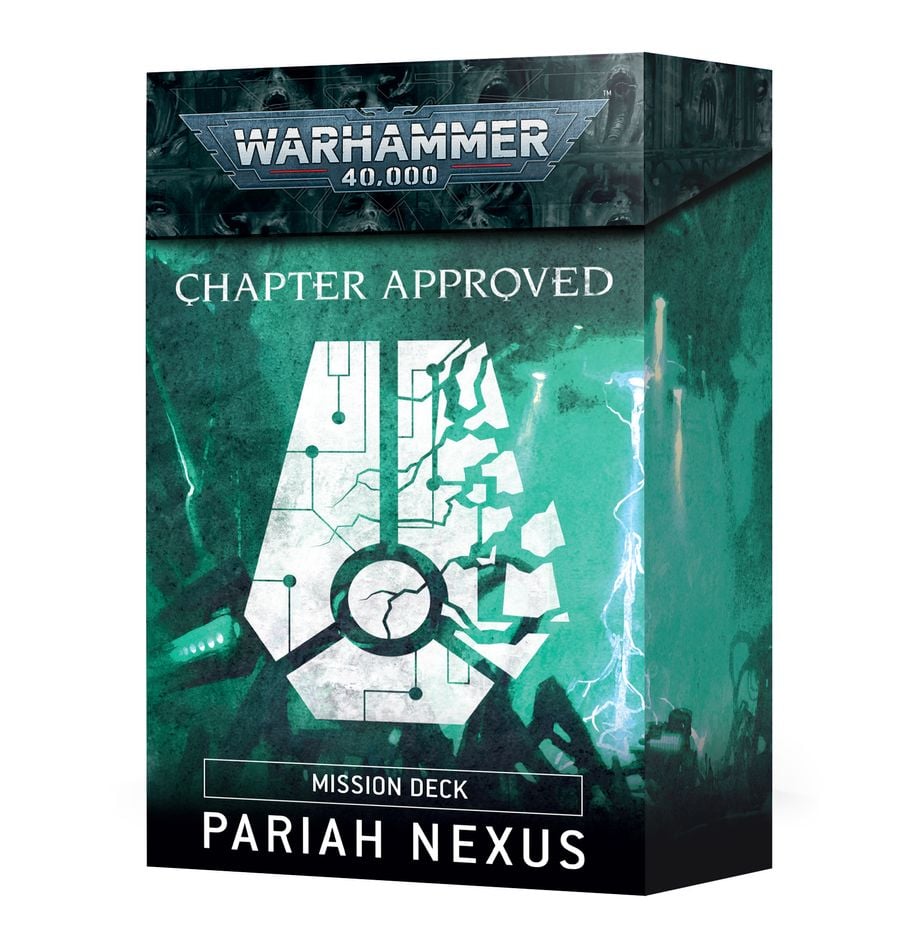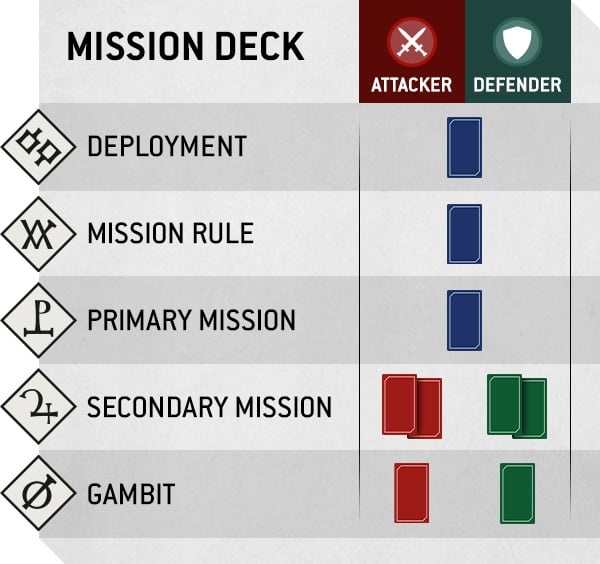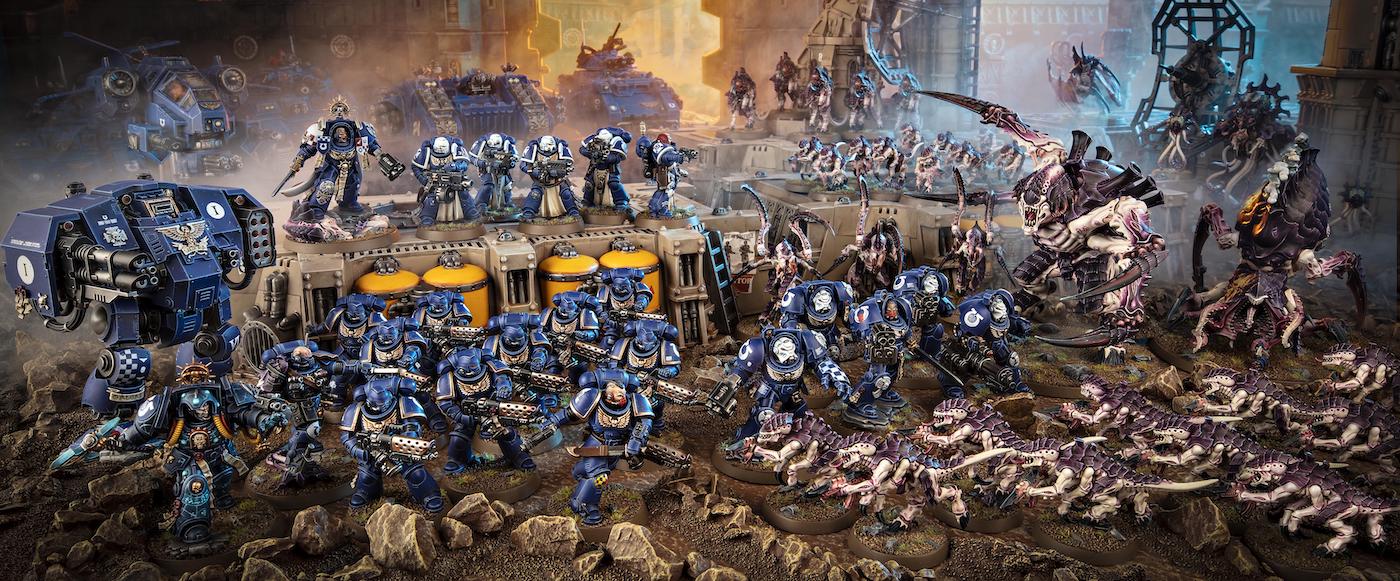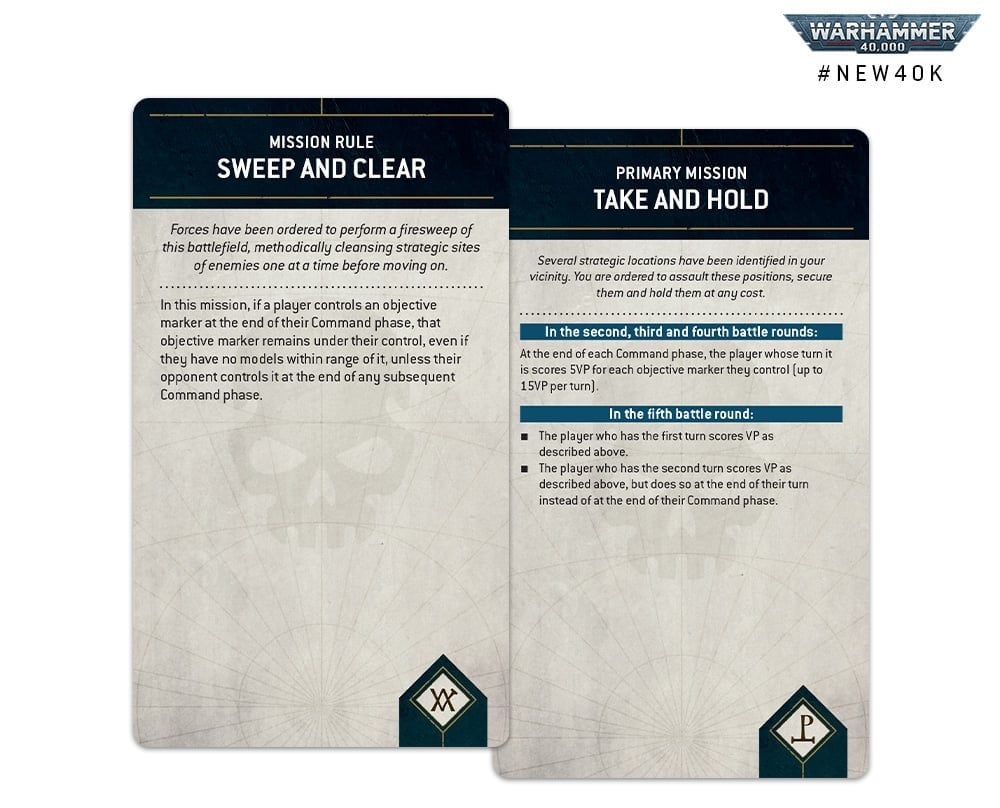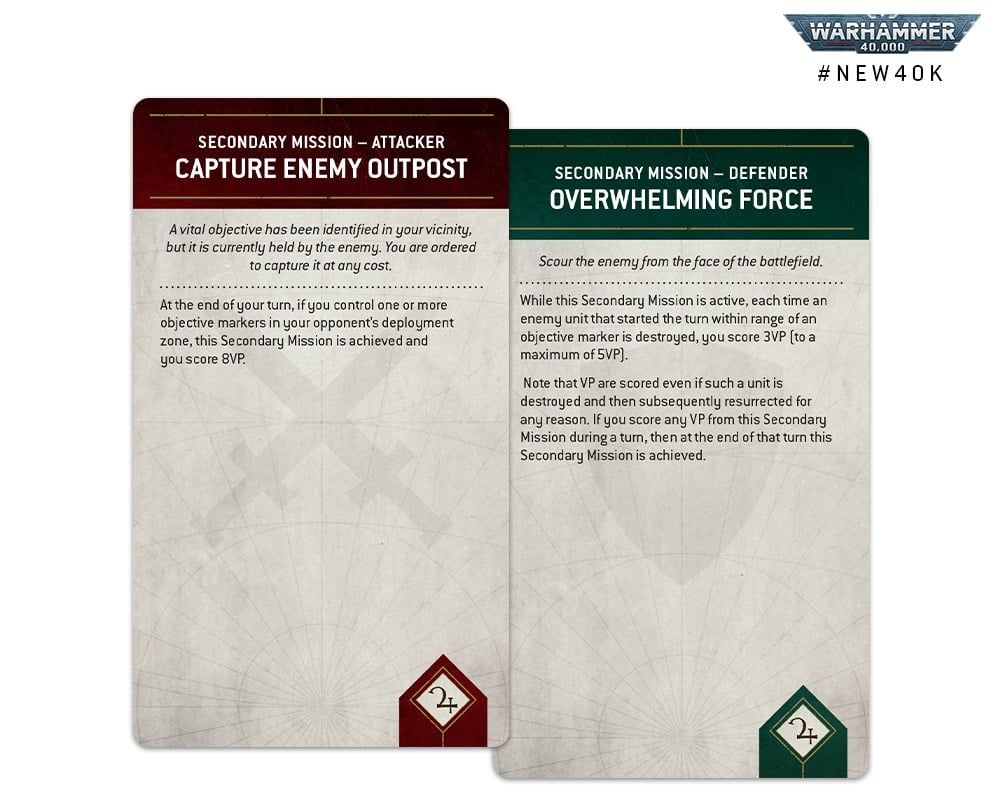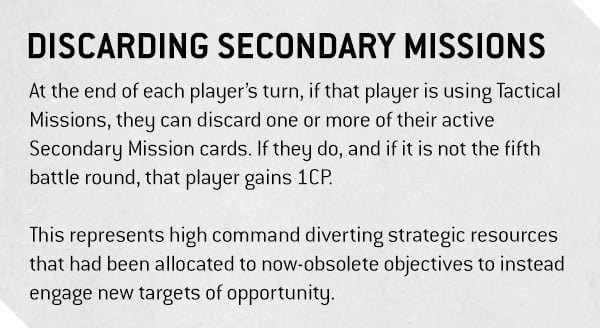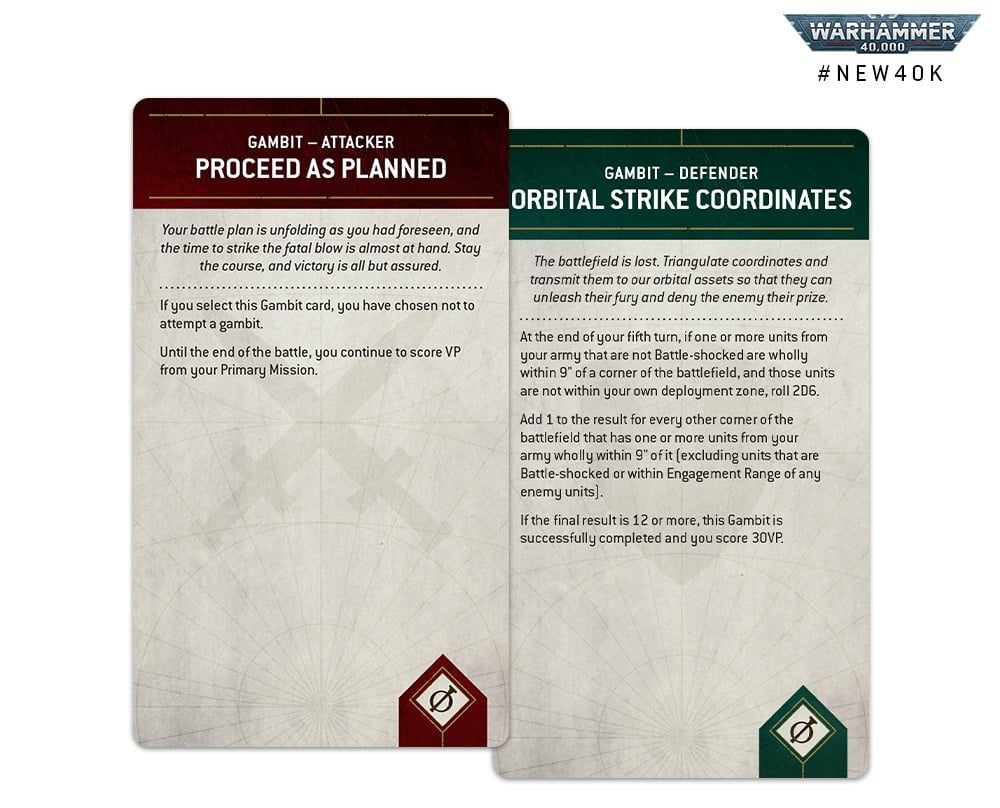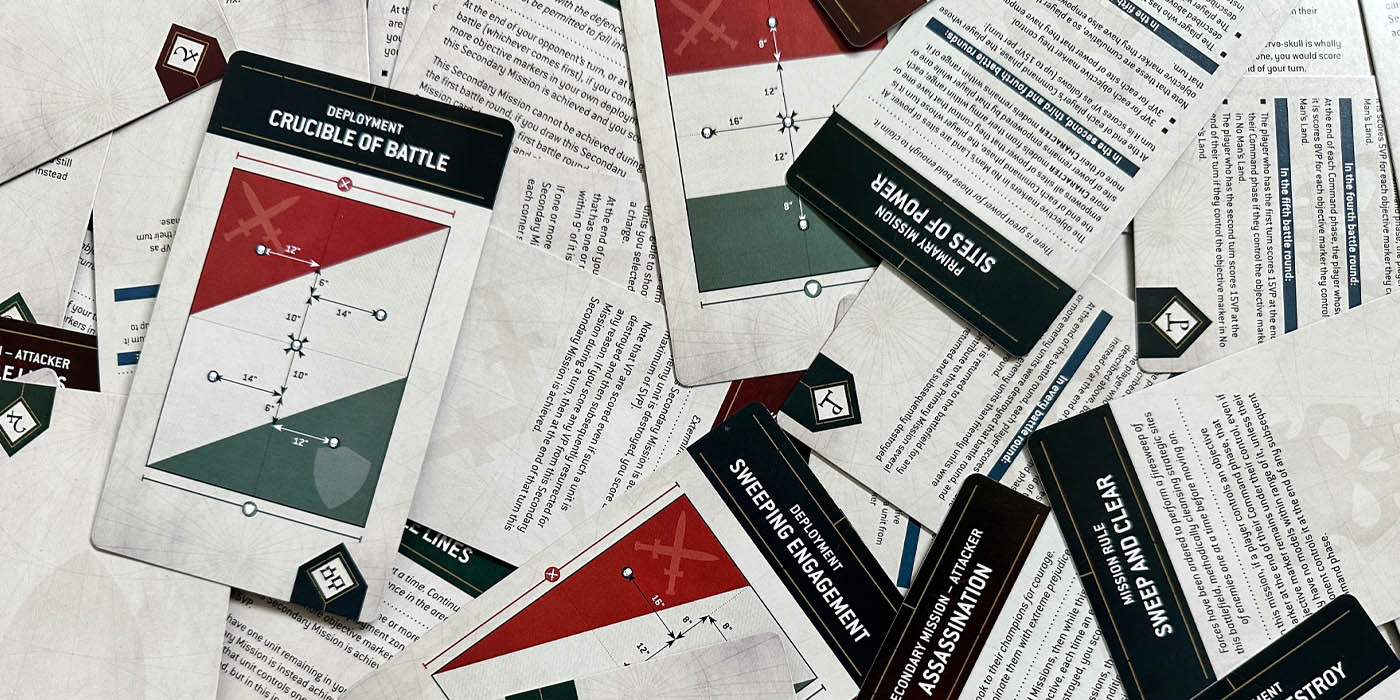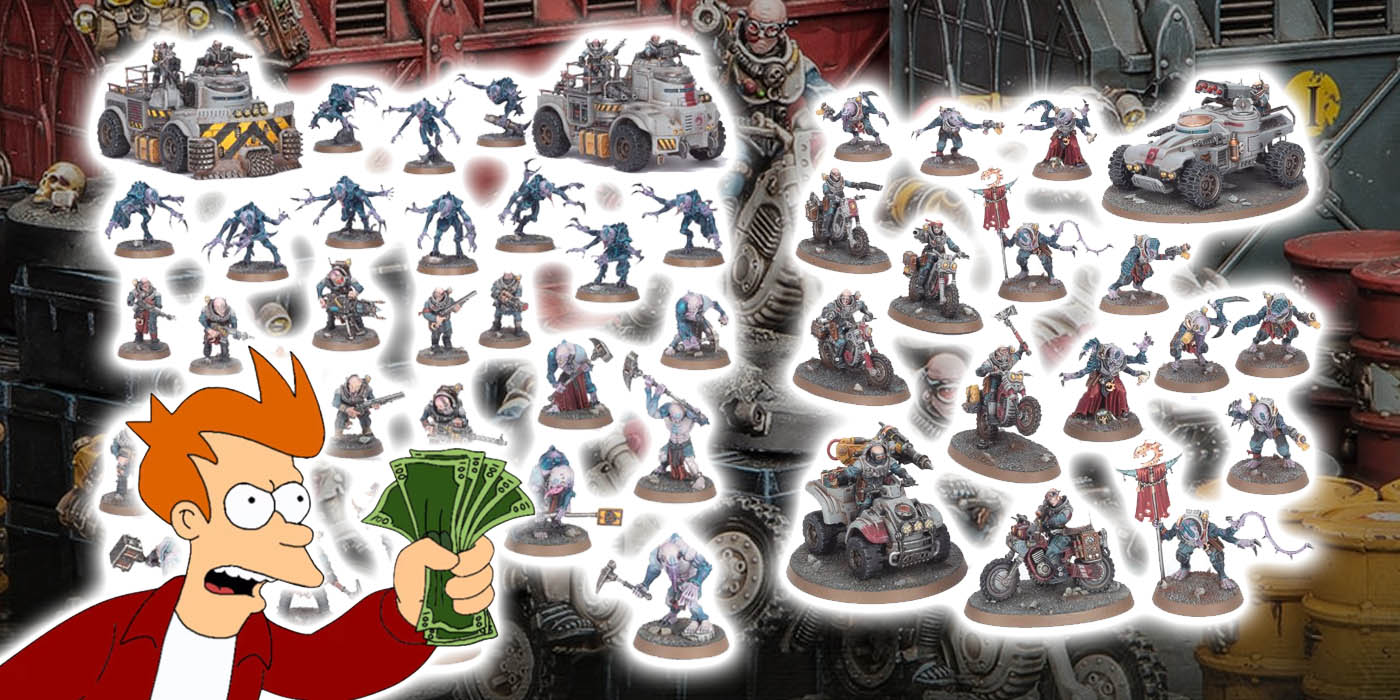Warhammer 40K Missions – What You Need To Know
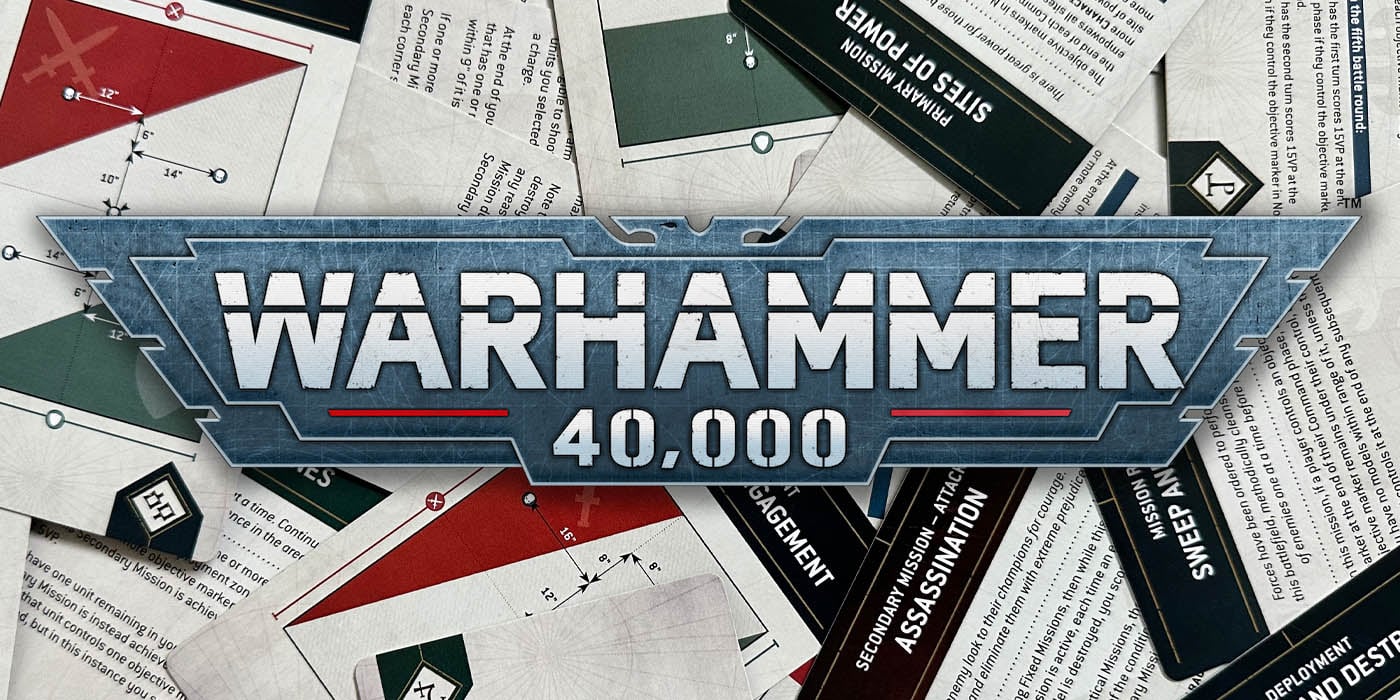
Take a look at how Warhammer 40K missions work in 10th Edition – Pariah Nexus
Warhammer is changing, and one of those big changes is how you play missions. 10th Edition is working to streamline the mission structure. The core Leviathan rule book comes with only a single mission: Only War. This is a stripped down basic mission and while it’s fine for getting started likely won’t see all that much play. In addition some modes of the game, such as Crusade or Combat Patrol have their own missions. For most normal 40K games however you will use the new mission card deck(s).
Pariah Nexus Mission Deck
Current this exists as the Pariah Nexus card deck, which details how to play “Pariah Nexus Battles”. We expect GW to release additional decks as time goes on. How different these decks will be, and if they will add to or replace Leviathan is anyone’s guess. The Pariah Nexus Mission Deck replaced the previous Leviathan Mission Deck. So today lets take a look at how you use it and how you play the new Warhammer 40K Missions.
The Decks
Now we say the Pariah Nexcus Mission Deck, but this baby is actually made up of 7 individual decks, so the first thing you need to do is separate them out. These 7 decks are:
- The Deployment Deck (5 Cards)
- The Primary Mission Deck (9 Cards)
- The Mission Rule Deck (10 Cards)
- Two identical Secondary Mission Decks, one for Attacker and one for Defender (18 Cards each)
- Two identical Secret Mission Decks, one for Attacker and one for Defender (4 Cards each)
With these split out and your army ready you can start to build your mission.
Building The Mission
After picking their armies, players can start to build the mission. This is done by picking one card each from the Deployment, Primary Mission and Mission rule decks. This is done by randomly drawing cards. Casual players will likely be fine with drawing them, however most events will likely pre-pick the mission for you.
Deployment Deck
Cards:
- Dawn of War
- Sweeping Engagement
- Crucible of Battle
- Hammer & Anvil
- Search & Destroy
- Tipping Point
The Deployment card will describe both how players can deploy armies, and where the objectives are placed. Each deployment will start with five objectives, one in the center, one in each players deployment zone and two in the no-mans-land. These deployment types include the easy to play and classic long-side-vs-long-side deployments and more esoteric ones likes Crucible of Battle, and the stepped-pattern Tipping Point.
Primary Mission Deck
Cards:
- Take and Hold
- The Ritual
- Unexploded Ordinance
- Linchpin
- Scorched Earth
- Supply Drop
- Purge the Foe
- Burden of Trust
- Terraform
Primary Missions will determine the main object of the battle you are fighting. These are in effect for the whole game, but normally score on turns 2-5. Some, like Take and Hold simply reward you for controlling objectives. Others like Purge the Foe task you with killing enemy units.
Mission Rule Deck
Cards:
- Adapt or Die
- Hidden Supplies
- Fog of War
- Inspired Leadership
- Prepared Positions
- Raise Banners
- Rapid Escalation
- Smoke and Mirrors
- Stalwarts
- Swift Action
Lastly, the Mission Rule is something that will affect the whole game. These can have a major effect on the game, such as Hidden Supplies, which adds an new objective to the tabletop. The Adapt or Die card lets you swap out a Secondary Mission card during the game, while the Fog of War card grants cover and restricts Stragegem use on turn 1. Overall the Mission Rule Cards can majorly change up how a battle goes.
Once you’ve drawn and built the mission, players set up the battlefield and determine Attacker and Defender.
Secondary Mission Deck
Cards:
- Secure No Man’s Land
- Containment
- Marked For Death
- Defend Stronghold
- Storm Hostile Objective*
- Engage On All Fronts*
- Recover Assets*
- Behind Enemy Lines*
- Area Denial
- Assassination*
- Cleanse*
- Establish Locus*
- Sabotage
- Overwhelming Force
- No Prisoners
- Bring It Down*
- Extend Battle Lines
- Cull The Horde*
*FIXED Secondary Missions
Next players must select Secondary Missions, and this is where things can get very interesting. Each player gets their own identical deck, of Secondary Missions. These are additional goals that players will try to achieve during the game, and they are unique to each player. Each player must first chose if they are going to used Fixed or Tactical Missions. Players do not have to pick the same thing here and each can chose differently. It’s possible again that events may require players to choose one of these two types. Fixed missions are used for the whole battle, while Tactical Missions can change as requirements are met.
If a player picks Fixed Missions they must chose two of the Secondary Mission cards that are marked with the Fixed Mission symbol. 7 of the 16 cards are Fixed Missions and these include cards like Bring It Down, which gives you points for killing Monster or Vehicle units. Their fixed mission is in play for the entire game and cannot be changed. The mission will describe how and when it is scored.
If a player uses Tactical Mission they will randomly draw two Secondary Mission cards. They use the full 18 card deck to draw from. If at the start of the players Command Phase they have less than two Secondary Mission cards they draw back up to two. If there are no cards left in the deck, they cannot draw more. Each mission will describe how when it is achieved. Once a mission is achieved the player scores points and discards the mission card.
Players using Tactical Missions also have two ways of cycling cards. They have access to the New Orders stratagem which is used in your Command phase to replaced an order. In addition at the end of each of a players turn, excluding the fifth turn, they can discard one or more Secondary Mission cards to gain 1 CP.
Start The Game
Having built the Mission and picked Secondary Missions players are now ready to get started with the game. The first step is to declare battle formations. This includes picking which units leaders will attach to, putting units in transports and declaring which units will be in reserve. Specific to Paraih Nexus, no more than half of the total number of units in an army, and no more than half of the total point cost of the army may be placed in Reserves (of any type). During a game Reserves cannot arrive on during the first battle round and are destroyed if they do not arrive by the end of the third battle round.
At last its time for players to deploy their armies. Starting with the Defender they alternate placing units. Once deployed players roll off to determine who takes the first turn. Then any pre-battle rules are resolved and at last the battle begins.
Secret Missions Deck
Cards:
- Command Insertion
- Shatter Cohesion
- Unbroken Wall
- War of Attrition
At the end of the third battle round players will use the final two decks, the Secret Mission decks. Each deck contains three Gambits and the Proceed as Planned card. Players secretly select one of the three gambits from the deck, if their current VP total is equal or lower than their opponent’s. At the end of the game, the Secret Mission is revealed, and if achieved scores the listed VP, with a maximum cal of 20CPs.
Ending The Game
The game ends after five battle rounds have been played. Players now take time to add up their victory points (VPs). Players can score a maximum of 50 VP from the Primary Mission, this includes points from a Secret Mission as well. Any points they scored over this are discarded. For instance if a player scored 15 VP in each of the first 3 rounds and then used a Secret Mission to score 30 more points at the end of the game, despite having scored a total of 75 VP, only 50 would count.
Players also add up their points from Secondary Missions. They can score a maximum of 40 VP from these. If a player is using Fixed Missions they are can score a maximum of 20 VP from each one of the missions. This means players can in total score 90 VP from missions. Lastly if a players army is entierly painted to a Battle Ready standard they gain 10 VP for a maximum total of 100 VP.
The player with the highest score wins, if both players are tied for points, the battle is a draw.
Warhammer is changing, and one of those big changes is how you play missions. 10th Edition is working to streamline the mission structure. The core Leviathan rule book comes with only a single mission: Only War. This is a stripped-down basic mission, and while it’s fine for getting started, it likely won’t see all that much play. In addition some modes of the game, such as Crusade or Combat Patrol have their own missions. For most normal 40K games however you will use the new mission card deck(s).
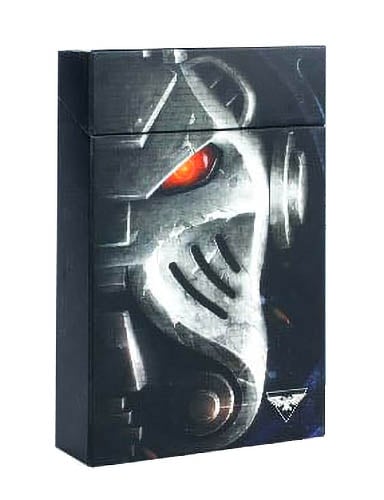 Leviathan Mission Deck
Leviathan Mission Deck
Previsouly, Warhammer 10th Edition launched using the Leviathan card deck, which details how to play Leviathan missions. For now however we have just the one deck. So today lets take a look at how you use it and how you play the Leviathan Warhammer 40K Missions.
The Decks
Now we say the Leviathan Mission Deck, but this baby is actually made up of 7 individual decks, so the first thing you need to do is separate them out. These 7 decks are:
- The Deployment Deck (5 Cards)
- The Primary Mission Deck (9 Cards)
- The Mission Rule Deck (12 Cards)
- Two identical Secondary Mission Decks, one for Attacker and one for Defender (16 Cards each)
- Two identical Gambit Decks, one for Attacker and one for Defender (4 Cards each)
With these split out and your army ready you can start to build your mission.
Building The Mission
After picking their armies, players can start to build the mission. This is done by picking one card each from the Deployment, Primary Mission and Mission rule decks. This can be done either by randomly drawing cards or by just picking them. Casual players will likely be fine with drawing them, however most events will likely pre-pick the mission for you.
Deployment Deck
Cards:
- Dawn of War
- Sweeping Engagement
- Crucible of Battle
- Hammer & Anvil
- Search & Destroy
The Deployment card will describe both how players can deploy armies, and where the objectives are placed. Each deployment will start with five objectives, one in the center, one in each players deployment zone and two in the no-mans-land. These deployment types include the easy to play and classic long-side-vs-long-side deployments and more esoteric ones likes Crucible of Battle.
Primary Mission Deck
Cards:
- Priority Targets
- Vital Ground
- Scorched Earth
- Purge the Foe
- Take and Hold
- Supply Drop
- The Ritual
- Deploy Servo-Skulls
- Sites of Power
Primary Missions will determine the main object of the battle you are fighting. These are in effect for the whole game, but normally score on turns 2-5. Some, like Take and Hold simply reward you for controlling objectives. Others like Purge the Foe task you with killing enemy units,
Mission Rule Deck
Cards:
- Chosen Battlefield
- Hidden Supplies
- Minefields
- Delayed Reserves
- Supply Lines
- Targets of Opportunity
- Chilling Rain
- Maelstrom of Battle
- Vox Static
- Scrambler Fields
- Sweep and Clear
- Secret Intel
Lastly the Mission Rule is something that will effect the whole game. These can have a major effect on the game, such as Delayed Reserves randomizing when reserves can arrive on the table. The Chilling Rain card means no extra rules are in effect, with the Maelstrom of Battle card forces you to draw two Rules that will be in effect. Overall this can majorly change up how a battle goes.
Once you’ve drawn and built the mission, players set up the battlefield and determine Attacker and Defender.
Secondary Mission Deck
Cards:
- A Tempting Target
- Area Denial
- Assassination
- Behind Enemy Lines
- Bring It Down
- Capture Enemy Outpost
- Cleanse
- Defend Stronghold
- Deploy Teleport Homer
- Engage On All Fronts
- Extend Battle Lines
- Investigate Signals
- No Prisoners
- Overwhelming Force
- Secure No Man’s Land
- Storm Hostile Objective
Next players must select Secondary Missions, and this is where things can get very interesting. Each player gets their own identical deck, of Secondary Missions. These are additional goals that players will try to achieve during the game, and they are unique to each player. Each player must first chose if they are going to used Fixed or Tactical Missions. Players do not have to pick the same thing here and each can chose differently. It’s possible again that events may require players to choose one of these two types. Fixed missions are used for the whole battle, while Tactical Missions can change as requirements are met.
If a player picks Fixed Missions they must chose two of the Secondary Mission cards that are marked with the Fixed Mission symbol. 7 of the 16 cards are Fixed Missions and these include cards like Bring It Down, which gives you points for killing Monster or Vehicle units. Their fixed mission is in play for the entire game and cannot be changed. The mission will describe how and when it is scored.
If a player uses Tactical Mission they will randomly draw two Secondary Mission cards. They use the full 16 card deck to draw from. If at the start of the players Command Phase they have less than two Secondary Mission cards they draw back up to two. If there are no cards left in the deck, they cannot draw more. Each mission will describe how when it is achieved. Once a mission is achieved the player scores points and discards the mission card.
Players using Tactical Missions also have two ways of cycling cards. They have access to the New Orders stratagem which is used in your Command phase to replaced an order, this can only be used once a game. In addition at the end of each of a players turn, excluding the fifth turn, they can discard one or more Secondary Mission cards to gain 1 CP.
Start The Game
Having built the Mission and picked Secondary Missions players are now ready to get started with the game. The first step is to declare battle formations. This includes picking which units leaders will attach to, putting units in transports and declaring which units will be in reserve. Specific to Leviathan, no more than half of the total number of units in an army, and no more than half of the total point cost of the army may be placed in Reserves (of any type). During a game Reserves cannot arrive on during the first battle round and are destroyed if they do not arrive by the end of the third battle round.
At last its time for players to deploy their armies. Starting with the Defender they alternate placing units. Once deployed players roll off to determine who takes the first turn. Then any pre-battle rules are resolved and at last the battle begins.
Gambit Deck
Cards:
- Delaying Tactics
- Emergency Evacuation
- Orbital Strike Coordinates
- Proceed As Planned
At the end of the third battle round players will use the final two decks, the Gambit decks. Each deck contains three Gambits and the Proceed as Planned card. Players randomly remove one of the three gambits from the deck. They can then chose to use either the Proceed as Planned card or pick one of the two remaining Gambits. If Proceed as Planned is chosen nothing happens. If a player picks a gambit they can no longer use or score on the Primary Mission card. Instead they will attempt to complete and score the new Gambit. These are hard to achieve goals with a large random element but come with a massive reward of 30 VP.
Ending The Game
The game ends after five battle rounds have been played. Players now take time to add up their victory points (VPs). Players can score a maximum of 50 VP from the Primary Mission, this includes points form a Gambit as well. Any points they scored over this are discarded. For instance if a player scored 15 VP in each of the first 3 rounds and then used a Gambit to score 30 more points at the end of the game, despite having scored a total of 75 VP, only 50 would count.
Players also add up their points from Secondary Missions. They can score a maximum of 40 VP from these. If a player is using Fixed Missions they are can score a maximum of 20 VP from each one of the missions. This means players can in total score 90 VP from missions. Lastly if a players army is entierly painted to a Battle Ready standard they gain 10 VP for a maximum total of 100 VP.
The player with the highest score wins, if both players are tied for points, the battle is a draw.

